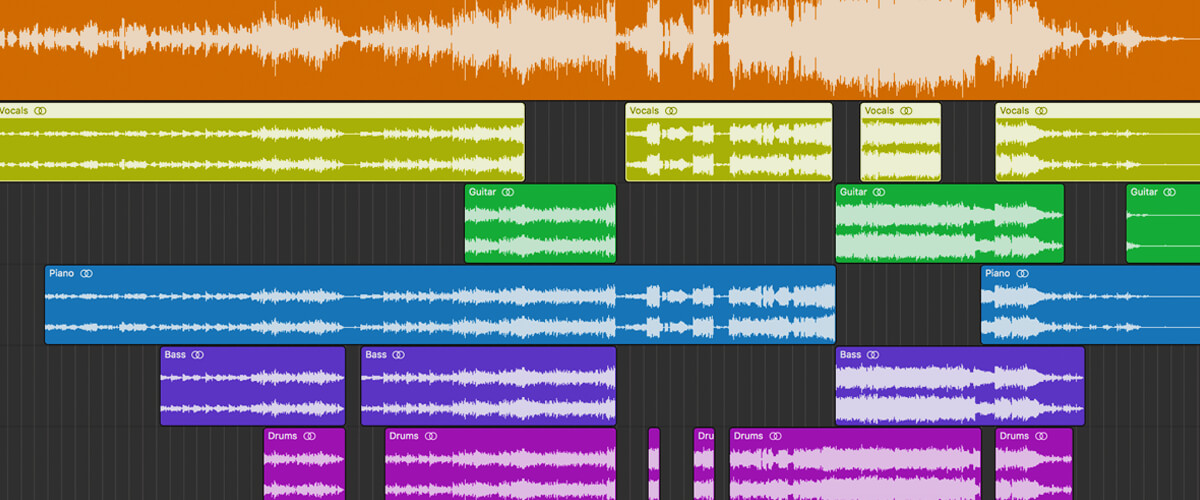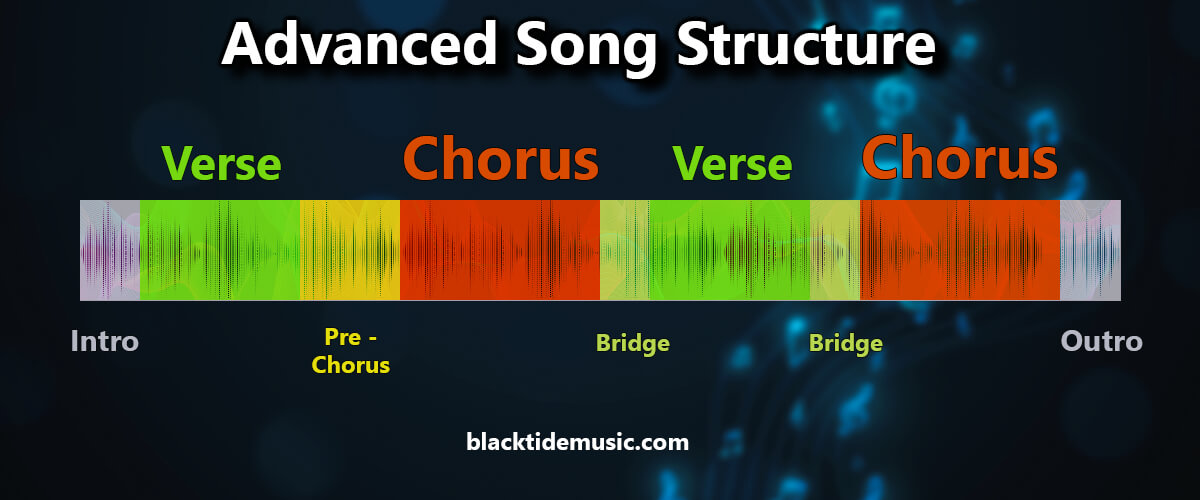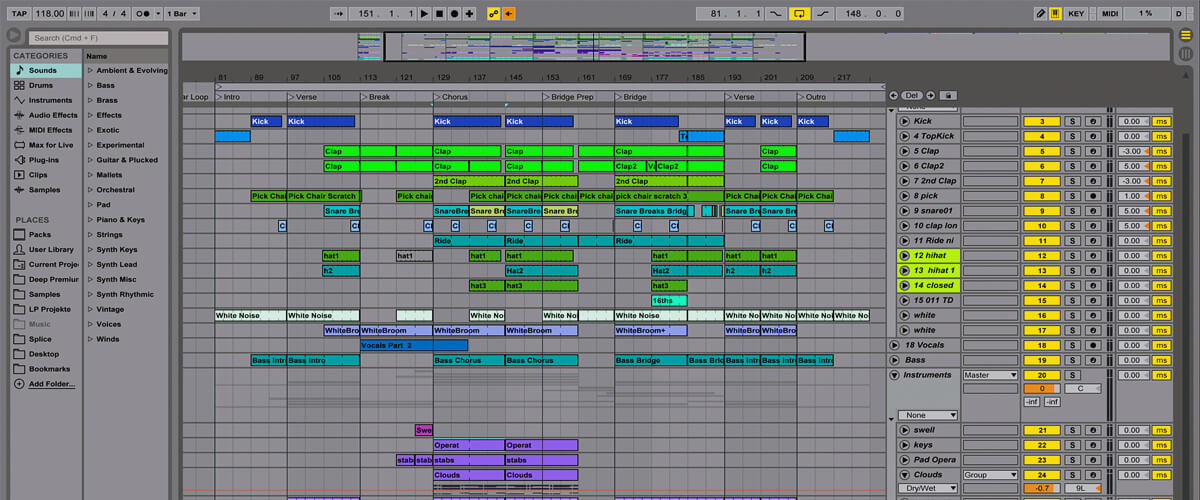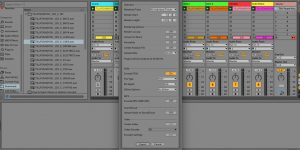As a musician with years of experience, I can confidently say that crafting engaging musical compositions is both an art and a science. It’s like embarking on a sonic journey where you get to guide your listeners through a rollercoaster of emotions.
Today, I want to introduce you to the secret weapon in every composer’s arsenal: the song structure template. With this invaluable blueprint, you’ll have the power to shape your musical ideas into coherent and gripping compositions that keep your audience hooked from start to finish.
Understanding song structure fundamentals

Welcome to the wonderful world of crafting engaging musical compositions through the art of song structure! As a seasoned musician, I’m here to provide practical advice that will empower you to write your own songs. Let’s dive in and explore the key elements of song structure, equipping you with the knowledge and tools to create fascinating musical journeys.
Verse
The verse sets the stage for your song, delivering the narrative and emotional depth. To make your verses shine, consider the following:
- Crafting engaging couplets. Create lines that flow smoothly and resonate with your listeners. Experiment with different rhyme schemes (such as AABB or ABAB) to find the one that best suits your desired mood and style.
- Choosing the right rhymes. Rhyme selection plays an important role in the impact of your verses. Consider using perfect rhymes (e.g., “love” and “above”) or explore the richness of near rhymes (e.g., “dream” and “seem”). Online resources like RhymeZone and Perfect Rhyme can assist you in finding the perfect rhymes for your lyrics.
- Exploring metaphors and imagery. Take your verses to the next level by incorporating vivid metaphors and imagery. Dive into the world of symbolism, similes, and descriptive language to create magnetic verses that paint a picture in the minds of your audience.
- Structuring your verses experiment with different line lengths, syllable counts, and rhythmic patterns to find a structure that complements the overall vibe of your composition.
Pre-chorus
The pre-chorus acts as a bridge between the verse and chorus, building anticipation and setting the stage for the song’s climax. Consider the following tips:
- Heightening anticipation. Experiment with chord progressions and dynamic shifts to create a sense of rising energy. Build tension through your lyrics and vocal delivery, leaving your listeners eagerly awaiting the chorus.
- Transitional techniques. Smoothly transition from the verse to the chorus by introducing subtle changes in melody, rhythm, or instrumentation. This transition serves as a musical signpost, guiding your listeners seamlessly into the heart of the song.
Chorus
The chorus is the focal point of your song, designed to leave a lasting impression on your audience. Here’s how to make it stand out:
- Crafting a memorable melody:
- Start with a strong hook. Begin by crafting a catchy and memorable hook that serves as the centerpiece of your melody. Experiment with melodic patterns, intervals, and rhythmic variations to create a hook that grabs attention.
- Explore different scales. Major and minor scales are commonly used, but don’t be afraid to venture into other scales like pentatonic, blues, or exotic scales to add unique flavors to your melody.
- Utilize chord progressions. Consider using both common progressions and more unconventional ones to add variety and interest.
- Balance familiarity and surprise. Strive for a balance between familiarity and surprise in your melody. Create melodic motifs or recurring phrases that give a sense of continuity and catchiness while also introducing unexpected twists and turns.
- Play with rhythm and phrasing. Experiment with different rhythmic patterns, syncopations, and accents to add rhythmic interest and energy. Vary the length and structure of phrases to create tension and release within the melody.
- Reinforcing the theme. Ensure that the lyrics and melody of your chorus reinforce the main theme or message of your song. This helps anchor your listeners, allowing them to connect with the core idea more deeply.
Beyond the basics: Exploring additional song sections

Let’s take things a step further in this section and explore additional song sections that can add depth, contrast, and a touch of magic to your compositions.
Bridge
The bridge is a section that provides contrast and progression within a song, offering a fresh perspective and keeping your listeners engaged. Here’s what you need to know:
- Defining the bridge. The bridge is a departure from the familiar verse-chorus structure. It introduces new melodies, lyrics, or chord progressions that bring a refreshing twist to your composition.
- Writing engaging bridges. To craft a compelling bridge, consider experimenting with different musical elements. Try shifting to a new key, changing the rhythm, or incorporating unexpected chord progressions. Use this section to explore new lyrical themes or add instrumental solos to captivate your audience and offer them a surprising musical experience.
Intro
The intro is the gateway to your musical world. It’s the first impression you make on your listeners, capturing their attention and setting the mood for the entire song.
Here are some ideas to create magnetic intros:
- Grabbing attention. Start with a strong and attention-grabbing musical hook or an intriguing lyrical phrase.
- Utilize instrumentation. Experiment with different instruments and sounds to create an intriguing intro. Consider using unconventional or unexpected instruments to grab the listener’s attention. Explore the sonic possibilities of synthesizers, unique percussion elements, or even natural sounds to add an extra layer of interest to your intro.
- Setting the mood. Think about the atmosphere you want to create. Experiment with different tempos, dynamics, and instrumentation to evoke the desired emotions and draw your listeners into your musical narrative. Let your intro become a sonic invitation that leaves them eager to explore further.
Outro
The outro serves as the grand finale, leaving a lasting impression on your listeners. It’s the perfect opportunity to wrap up your song with finesse and style. Consider the following techniques:
- Creating memorable endings. Experiment with musical dynamics, such as gradually fading out, ending abruptly for a surprise effect, or building to a climactic resolution. Incorporate instrumental flourishes, vocal ad-libs, or repeating motifs that give your listeners a sense of completion and satisfaction.
- Leaving a lasting impression. Consider utilizing a final lyrical message or a memorable musical phrase that lingers in the minds of your audience.
Remember, song structure is a canvas for your creativity, allowing you to shape your music and evoke emotions in your listeners. So keep experimenting and refining your skills, and don’t be afraid to push the boundaries of your own artistry.
Adapting song structures to different genres

As we continue our exploration of song structure, it’s essential to understand how different genres utilize this framework to create their unique musical landscapes. Whether you’re drawn to the infectious beats of pop, the raw energy of rock, or the rhythmic poetry of hip-hop, each genre has its own signature song structures that contribute to its distinct sound.
Pop
Pop music thrives on catchy hooks, infectious melodies, and memorable refrains that get stuck in your head for days. Common song structures in pop include:
- Verse-Chorus-Verse-Chorus-Bridge-Chorus. This structure is a staple in pop music, allowing for the development of a strong and memorable chorus. The verses build up the narrative, while the catchy chorus reinforces the song’s main theme. The bridge adds contrast and keeps the listeners engaged before returning to the final chorus.
- Repetitive elements. Pop songs often incorporate repetitive elements like catchy leads, melodic hooks, and earworms that listeners can easily sing along to. These elements create familiarity and make the song instantly recognizable, ensuring it resonates with a wide audience.
Rock
Rock music is characterized by powerful guitar riffs and electrifying solos. Song structures in rock often emphasize dynamic transitions and instrumental prowess. Here are a couple of examples:
- Verse-Chorus-Verse-Chorus-Solo-Chorus. This structure provides a solid foundation for rock songs. The verses set the stage, the chorus delivers the powerful hook, and the solo section showcases the instrumental prowess and creativity of the musicians. The final chorus brings it all home, leaving a lasting impact.
- Dynamic transitions. Rock songs often incorporate dynamic transitions, building up intensity through tempo, volume, and instrumentation changes. These transitions add excitement and keep the listeners on the edge of their seats.
Hip-Hop
Hip-hop is a genre that thrives on rhythm, poetry, and storytelling. While it may have a more flexible approach to song structure, certain elements are commonly found in hip-hop compositions:
- Choruses, hooks, and bridges. Hip-hop often incorporates catchy choruses or hooks that serve as the main melodic and lyrical focal points. Bridges add variation and contrast, breaking up the rap verses and providing a fresh perspective.
- Rap couplets. In hip-hop, the verses are typically structured as rap couplets, where two lines rhyme together. This rhythmic pattern allows the artist to deliver their message and showcase their lyrical prowess.
As for honing your songwriting skills, various resources are available to assist you on your journey. Consider exploring songwriting books, online courses, and workshops to enhance your understanding of song structure, rhyming techniques, and melody creation.
One highly recommended course that I’ve personally found immensely valuable is the “Arrangement & Song Structure Masterclass” available on Udemy. This comprehensive course dives deep into the intricacies of arranging and structuring songs, offering invaluable insights and techniques to elevate your compositions. Whether you’re a beginner or have some songwriting experience, this masterclass provides a wealth of knowledge that will sharpen your skills and broaden your understanding of effective song structures.
Knowing how to structure a song empowers you to effectively organize your ideas, guide your listeners through emotional peaks and valleys, and deliver a satisfying musical experience. The verse, pre-chorus, chorus, bridge, and other song sections each serve a purpose and contribute to the overall narrative and impact of your composition. By understanding how these sections function and interplay with one another, you can create compelling dynamics and keep your listeners engaged from start to finish.
Now, armed with this knowledge, it’s time to take the stage, captivate your audience, and create music that resonates deeply with listeners worldwide.











